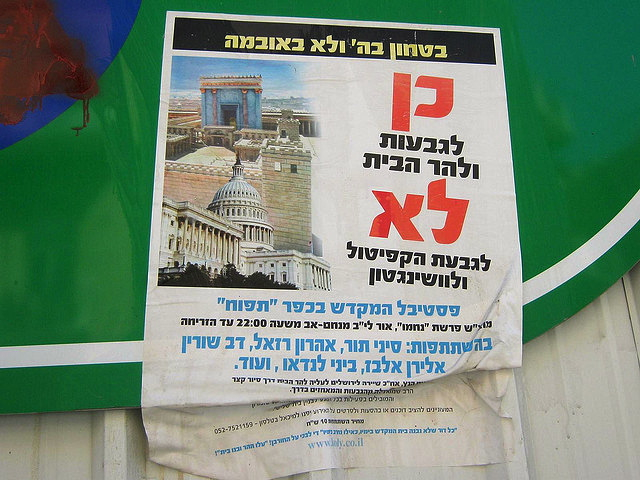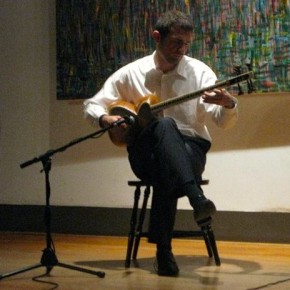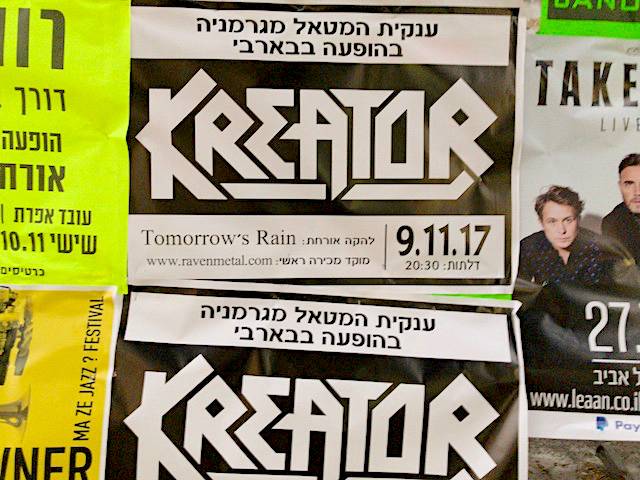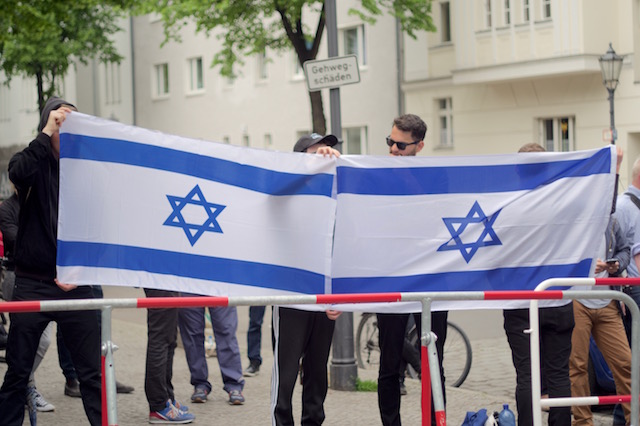On Tuesday, Jews will observe Tisha B’Av. It’s a sad and solemn holiday, which mainly commemorates the destruction of the two Holy Temples, and which has subsumed many other tragic events that have befallen the Jews over the centuries. Those events continued into the 20th century, as on Tisha B’Av in 1942, the mass deportation of Jews from the Warsaw Ghetto to the extermination camp, Treblinka, began. Although the Holocaust has its own day of remembrance, it is part of the lamentation of Tisha B’Av as well. Prayers were composed and added to Tisha B’Av services to commemorate it.
As with all the various calamities that have been thrown into Tisha B’Av, it is the destruction of the Temples that is at its heart. Each Temple was destroyed because the people of Israel or Judea had transgressed. The First Temple was destroyed because of idolatry. The Second was destroyed because Jews had fallen into hatred of each other. The Third hasn’t been built yet, but the seeds of the destructive sin is already growing.
Since the 1967 war, there has been a strain of messianic, Orthodox Judaism that has envisioned the construction of the prophesied Third Temple on the Temple Mount. That mountain currently supports two of Islam’s holiest sites, the Dome of the Rock and the al-Aqsa Mosque. The site is administered by the Jerusalem Islamic Waqf, and Israel prevents Jews from going up the Mount.
The reason for that prohibition is not solely political. For nearly 2,000 years, since the Romans razed the Temple, Jewish law (halakha) has been very clear that Jews are forbidden to tread on the ground of the Temple Mount because the holiest artifact, the inner sanctuary where the Ark of the Covenant is believed to have been housed, is thought to be buried there and a Jew must not tread over that area. Its location within the Mount cannot be precisely known, so the whole mountain top has been forbidden.
As with many aspects of Jewish law and tradition, this consensus has been challenged by Zionism. Although most rabbis, including most Zionist rabbis, still agree that Jews are not permitted on the Temple Mount, some have made the opposite case. Indeed, some have even gone so far as to call for the rebuilding of the Temple, despite the fact that Jewish tradition has always held that such an undertaking must only be done with the coming of the Messiah.
For most of the past 46 years, the Third Temple movement has been the province of a handful of zealots. But it is now beginning to seep deeper into Israeli politics. Indeed, members of an increasingly powerful religious party are now some of the advocates.

A year ago, a Knesset member from the Jewish Home party, Zevulun Orlev, called for building the Third Temple. At the time, Orlev was just a Knesset member from a minor party which held only three seats. As a result, his words caused little uproar. Still, Orlev was the leader of the party at the time, and it is chilling to note that he was so determined to make this happen that he proposed laws that would insulate the project from opposition from “the left,” and the courts. Even more frightening, it bothered Orlev not one bit that his intention to remove the Dome of the Rock and al-Aqsa Mosque would mean that the “billion-strong Muslim world would surely launch a world war.” Apparently, he believed God would protect Israel form that onslaught.
But Orlev was deposed from the head of the Jewish Home party and replaced by Naftali Bennett, who brought the party to major prominence, and a key role in Benjamin Netanyahu’s current government. With this newfound party power, it is certainly a relief that Orlev retired from politics in the wake of his defeat by Bennet. However, that doesn’t mean that Olev’s ideas have evacuated Israeli politics.
Bennett’s Number Two, Uri Ariel, seems even more committed than Orlev to the Third Temple. After the last election, when Jewish Home had suddenly swept into prominence, and when the elongated coalition talks were finally settled, Ariel had been appointed as Israel’s Housing and Construction Minister. Taking that role to heart, he began to hint at his ideas at the ceremony marking the changeover in the Ministry.
“Is someone in this building already drawing construction plans for the Third Temple?” Ariel mused. There was a round of applause and his predecessor, Ariel Attias said “I think [US President Barack] Obama would have to authorize that.” Ariel responded, “I think it’s a higher power who is in charge.”
This might have just been idle nationalistic musing. As Israel has grown more secure, and ever more arrogant, the nationalists, especially the religious ones, have found the icon of a New Hebrew kingdom, symbolized by the Temple, somewhat more appealing even if most of them don’t seriously want to pursue it. But for Uri Ariel, it turns out there was more to it than that. At a conference earlier this month, Ariel called explicitly for building the Third Temple.
There is no reason to hit the panic button over this. Ariel’s notion still reflects the wishes and views of only a small minority of Israelis, and probably even fewer in government. Mainstream rabbinic opinion still holds that the Third Temple is a messianic event, that it cannot be built without the fulfillment of prophecy to herald its construction and that Jews may still not tread on the Temple Mount. No Third Temple will be built in the near future. But the increasing stature it has as an icon, and the fact that a full government Minister, one in charge of building structures, is able to make such a call says a lot about Israel’s character today.
As Israel continues its slide into perpetual conflict, as more religious Zionists see it in messianic terms, and as it becomes both more secure and more fearful, one wonders whether Israel will not follow the two Temples that were so central to the earlier kingdoms. The Israeli belief that its fear, however supported by Jewish history it may be, justifies not only the massive dispossession of others that accompanied its birth and its 1967 conquest, but also the denial of basic human and civil rights to millions of people for the past 46 years, is little different from the sins which the Jewish people have believed for thousands of years led to the destruction of the first two Temples.
Ariel’s desire to build that Third Temple, and his boss, Naftali Bennett’s ideas of cementing the occupation as a permanent reality are of a piece. The First Temple fell, according to Jewish tradition, because of idolatry, the second because the Jews were turning on each other. The modern State of Israel is not, as some contend, drowning itself in occupation. It’s deeper than that. Israel is heading down a path of self-destruction because, as a country, it believes that it is entitled to deprive millions of innocents of their rights to property, liberty, dignity. That’s what I’ll be lamenting on this Tisha B’Av.
Photos courtesy of Neal Ungerleider and Amazing Discoveries. Published under a Creative Commons license.





